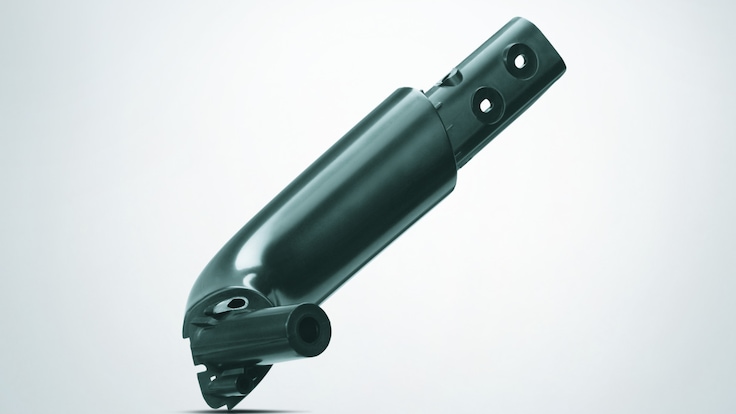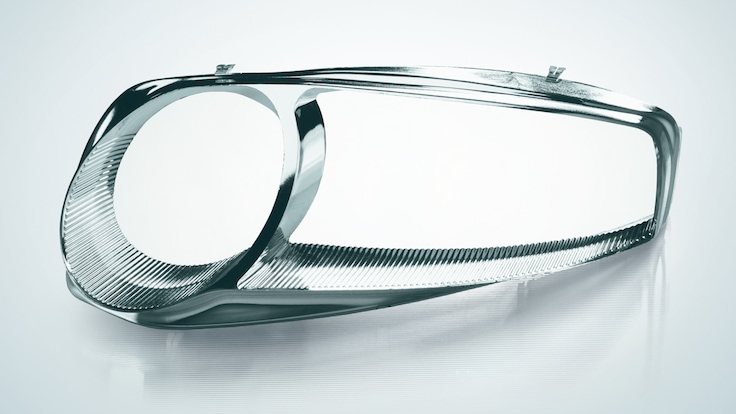Plastics & Rubber
PLASTINUM® Gas Injection Molding
What is gas injection molding for plastics?

Gas injection molding (GIM) is a plastic injection process. Usually, high-pressure nitrogen shapes a hollow or channel in a thicker section of the molded plastic part. The nitrogen forces the melted mass out from the component's core and presses it against the mold surface. After solidification, the gas is released from the cavity. Gas injection molding offers major benefits such as better dimensional stability and increased surface quality. Common products produced via the gas injection molding process include automotive parts and all kinds of handles on various products.
Linde's expertise is taking the gas-assisted process efficiency and quality to the next level by optimizing the supply and pressure boosting of nitrogen as well as offering a unique technology using liquid CO2 for significant cycle time reductions.

PLASTINUM® GIM with CO2
Our PLASTINUM Gas Injection Molding (GIM) takes efficiency to the next level by replacing gaseous nitrogen with liquid carbon dioxide (CO2). While matching the heat removal capacity and cycle times of water injection molding, carbon dioxide does not leave any moisture on the products or tools, thus eliminating an additional drying step in the fluid injection cycle. Carbon dioxide has a much greater cooling capacity than nitrogen due to its much higher density, higher specific heat capacity and high expansion cooling capacity during depressurization at the end of the cycle. This allows the part to cool down much more quickly. Gas injection molding installations that use CO2 require a suitable carbon dioxide supply system, pressure and control modules and gas injectors that are optimized for CO2 use. Linde has also developed PLASTINUM GIM CO2 pressure control units and injectors to meet these needs in close collaboration with our OEM partners.
Benefits PLASTINUM Gas Injection Molding with CO2:
- Enhanced cooling power
- Cycle times accelerated by up to 40%
- Elimination of water handling issues associated with water injection molding

PLASTINUM® Gas Injection Molding with Nitrogen
Gas injection molding with nitrogen is a proven, well-established process to produce hollow parts or parts with hollow sections. The efficiency and costs of this process suffer from low purity nitrogen and inefficient pressure boosting of gaseous nitrogen, leading to downtimes and scrap, as well as high maintenance and energy costs for gas compression. Linde offers the most suitable high-pressure nitrogen supply solution for each individual customer. If the customer´s demand justifies a bulk tank installation, customers benefit from a cost-effective supply of high-pressure nitrogen based on the PRESUS N10 liquid nitrogen booster pump. Furthermore, the provided nitrogen with low oxygen and no oil content enables customers to produce parts with less scrap and downtime because gas injectors are not getting clogged by oxidized plastic or additives under high temperatures and gas pressures.
Benefits PLASTINUM Gas Injection Molding with Nitrogen:
- Cost savings compared with gas compressors
- Reduced downtimes and scrap rates due to the high purity of high-pressure nitrogen
- Elimination of contamination and oxidation